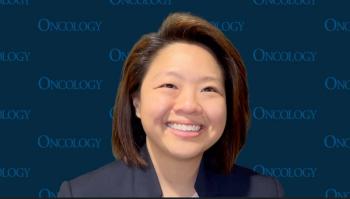
Stopping Cancer Treatment: It Isn’t Sophie’s Choice
Multiple lines of therapy in stage IV tumors have diminishing benefit, and this is where patients and families need to know that the finish line is the same.
The topic of the cost of healthcare in general and cancer care in particular is an emotionally charged issue. Often, the situation is described as a patient being forced to choose life or death when presented with a $20,000 to $40,000 monthly drug bill that has been deemed minimally covered by their heartless insurance carrier. In fact, the treatment offered has little or no improvement in survival in most cases. But that fact is never mentioned, because in the United States, we continue to push the idea that “you can’t just do nothing. You have to fight.” Even if you have no ammunition.
Dr. Peter Yu, president of the American Society of Clinical Oncology (ASCO), recently addressed the cost of cancer care at a meeting entitled “Patient Centered Oncology Care.” “Physicians can no longer be someone who does things to patients, but must be someone who does things with patients,” he said. It is also called shared decision making. As medicine has increasingly complex and expensive offerings for specific problems, we have to acknowledge that all of them are not appropriate for every situation. Every patient with chest pain does not need a catheter. Every progression of solid tumor does not benefit from yet another line of therapy. Just because we have a drug available does not mean it actually offers benefit.
A
My opinion is that doctors back down from these discussions because they are difficult and they want to be the hero to the patient at that moment. I wish more oncologists could hear what patients and families say when, a few weeks later, they are actively dying and their family members reflect back and say, “I don’t know why Dr. X wanted him to take that medicine. It did nothing and he was miserable.” I know-hindsight is 20/20, but it is not uncommon for the family to bring in a large bag of terrifically expensive medication they have acquired and ask me if I can give it to some other patient. What a sickening waste on so many levels.
It is not just treatments that need more thoughtful consideration; what about surveillance testing-CTs, PET scans, blood work? It is frequently ordered because “the patient wants it.” Well, I pay insurance premiums too and that is not how I want my risk pool dollars being wasted. It is worth the time to ask what the goal is of having that test. Then explain how random testing is unlikely to achieve that goal. I too dread those peer-to-peer calls when ordering a test. If it is turned down, most doctors will make nasty remarks about the insurer. But you cannot blame them when you knew there was no indication for the test. They are paying the bill so they get a say even if we sometimes find it to be irrational.
As a hospice CMO, I am asked multiple times a day about coverage issues-drugs, procedures, radiation, etc. I detest that part of my job. I do not like being the “decider,” but that is my job. As you may know, nonprofit hospice programs have a razor-thin operating margin, so my rule of thumb is that I will pay for anything that makes the patient feel better. But I say no to a lot of useless drugs and blood tests that have no influence on patients’ comfort. I cringe at the thought of a nurse hanging up the phone, turning to a family, and saying, “Dr. Bechhold said you can’t have that,” with no medical justification given. I always explain my reasoning to the nurse so that she can educate the family, and that works the vast majority of the time. It still makes me squirm, though, to think I sound like a cold, heartless something.
What if we had an authoritative source made up of several physicians who could take an objective view of treatment decisions? Oh wait, we do-clinical guidelines, National Comprehensive Cancer Network guidelines, ASCO guidelines. I know they are not perfect! But I am willing to invoke their authoritative voice to provide support to my recommendations when it may be reassuring to patients. Basically I am saying, “I am not making this stuff up!” I want to provide as much information as they wish as we make choices together with their best outcome the ultimate result.
Oncology is an emotional job, but we have to use our head to make wise choices with our patients. Hopefully, they know they have our heart.
Newsletter
Stay up to date on recent advances in the multidisciplinary approach to cancer.

















































































